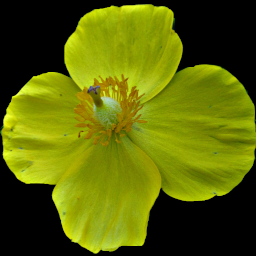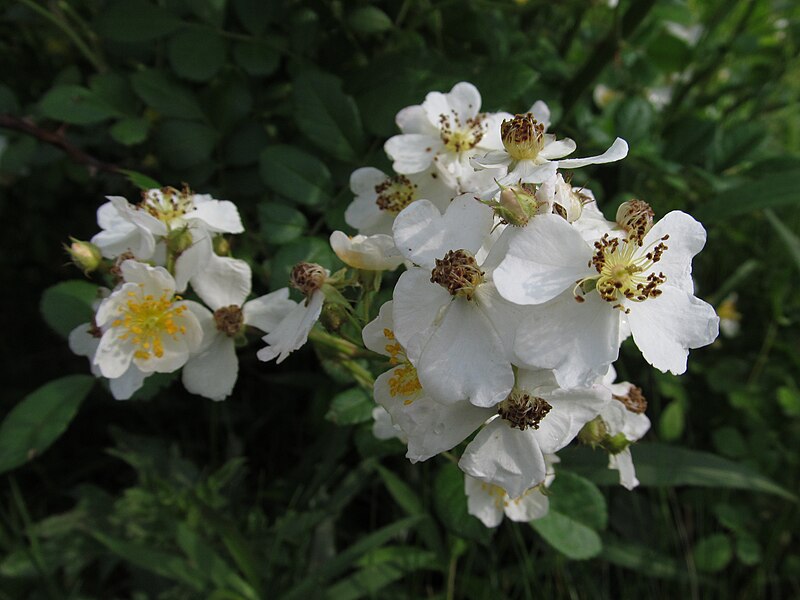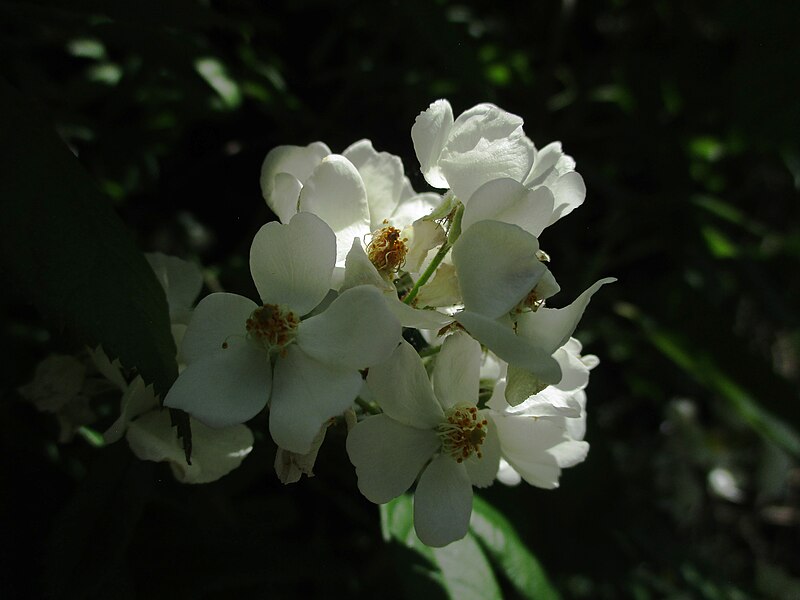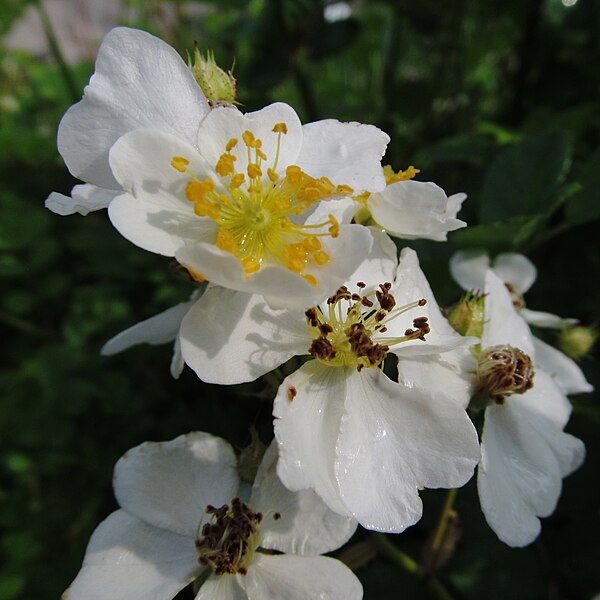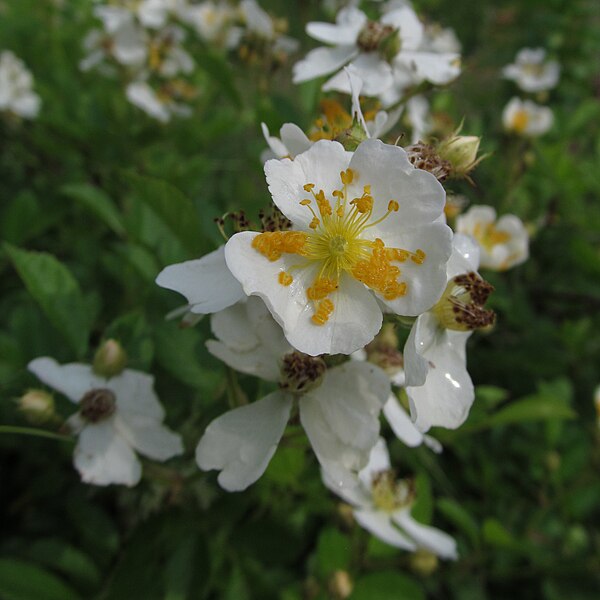
The pale cream flowers are distinctive, although occasional deep yellow variants occur. This is the largest-flowered cinquefoil that commonly grows wild in our area. It came from Europe and has established itself in vacant lots, unmown fields, and other places where humans have altered the landscape. These plants were blooming in a vacant lot in Beechview.


The leaves have five or seven parts, almost but not completely divided at the center.

Comments
